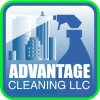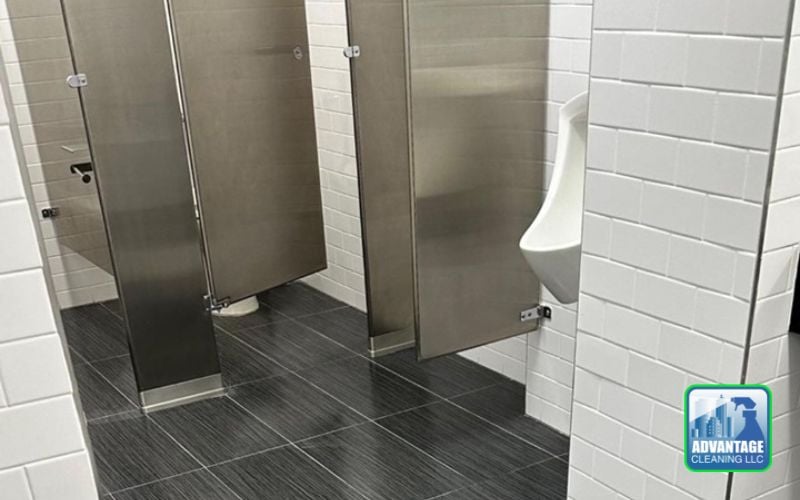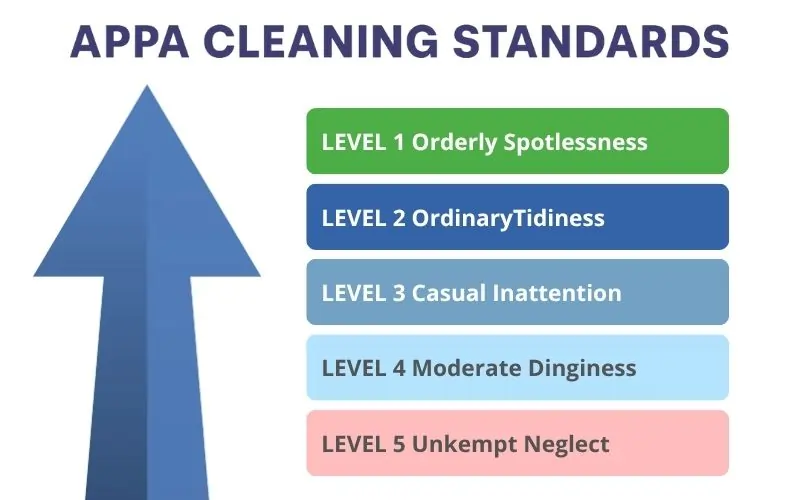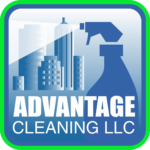In any commercial facility, from high-rise offices to industrial plants and healthcare clinics, restrooms are more than a utility—they are a compliance zone, a reflection of your operational standards, and a frontline defense in public health. For any business, maintaining cleanliness and hygiene in commercial restrooms is crucial as it reflects the professional image and reputation of the business. That’s why commercial toilet cleaning isn’t optional—it’s mandatory, strategic, and requires effective cleaning to ensure thoroughness and quality, minimizing risks if neglected.
This article dives deep into what’s required by law, what’s expected by tenants and customers, and what clean really means in a commercial setting. It also outlines how a properly structured commercial restroom cleaning program prevents issues before they happen.
Why Commercial Toilet Cleaning Matters
The average commercial building sees hundreds to thousands of restroom users per week. Multiply that by hand-to-surface contact on door handles, flush valves, soap dispensers, toilet seats, urinals, and sink taps—and you get one of the highest-risk environments for cross contamination and disease transmission in any facility, as these high-touch surfaces can accumulate germs.
Proper flushing procedures are crucial in the cleaning process, as flushing can disperse water particles into the air and affect surrounding surfaces. It is essential to wipe down the outer surfaces that have been treated with cleaner after flushing to mitigate potential contamination.
These issues are magnified in high-traffic restrooms like those found in office buildings, tourist attractions, schools, and medical facilities. At Advantage Cleaning, our commercial cleaning services in NYC and Jersey City are structured to prevent these risks with detailed, scheduled restroom cleaning built around your operation and occupancy.
Commercial restrooms are high-risk hygiene zones
According to the CDC, restrooms are classified as “high-risk hygiene zones” that require routine cleaning and disinfection. Dirty toilets don’t just leave a bad impression—they actively endanger public health.
What Counts as Commercial Toilet Cleaning?
This is not janitorial busywork—it’s infection control.
Commercial bathroom cleaning is a structured, methodical cleaning process that addresses:
- Toilet bowls, urinals, seats, flush handles, and partitions
- Deep disinfection of high-touch areas
- Urinal cleaning and odor control
- Scrubbing sinks, walls, and bathroom surfaces
- Mopping and drying wet floors
- Emptying and sanitizing trash receptacles and trash cans
- Restocking toilet paper, soap dispensers, and hand towels
- Maintaining a sanitary environment that eliminates odors
- Using EPA-approved toilet bowl cleaners and disinfectants
- Using a toilet brush for scrubbing the insides of toilets and urinals
Every element of Advantage Cleaning’s office cleaning services in NYC and industrial cleaning includes targeted restroom cleaning to handle heavy usage, odors, and compliance. We focus on both daily janitorial cleaning and scheduled commercial deep-cleaning rotations.
Legal Standards: What’s Required by Law?
OSHA General Industry Requirements
Under 29 CFR 1910.141, U.S. employers must provide:
- Clean, sanitary toilets with warm water and soap
- A minimum number of toilets per employees:
- 1 for 1–15 workers
- 2 for 16–35 workers
- 3 for 36–55 workers
- +1 per 40 after 150
- Restrooms must be available at all times
Denying restroom access or failing to maintain them is a federal violation.
These regulations apply across all facilities—especially those we serve through school cleaning services in NYC and healthcare clinics and hospital cleaning services in NYC. Proper cleaning ensures OSHA and health code compliance while protecting your teams and occupants.
OSHA for Construction Sites
OSHA standards for construction projects must provide:
- 1 toilet per 20 workers
- Regularly cleaned non-sewered toilets or chemical units
- Handwashing facilities when possible
NYC-Specific Restroom Laws
NYC enforces sanitation through:
- Health Code Article 81 for restaurants, retail, and public buildings
- The Plumbing Code (PC 403) regulating fixture counts and ADA layout compliance
- NYC DOE standards requiring daily restroom cleaning and scheduled deep cleans in schools
For facilities undergoing renovations or expansions, our post-construction cleaning services ensure newly built or upgraded restrooms meet hygiene standards and are inspection-ready. We remove construction dust, adhesive, and debris from all non porous surfaces, including restrooms.
New Jersey Commercial Restroom Standards
New Jersey’s Public Health and Labor Departments align with OSHA but also enforce:
- Routine maintenance and repairs under NJ UCC
- Daily cleaning for high traffic restrooms in public-facing facilities
- Restroom access mandates for shift-based work, enforced by PEOSH (PEOSH Sanitation Standard (29 CFR 1910.141)
What Clean Really Means: Standards for Disinfection
A professional commercial restroom cleaning program must include:
- Dusting above-the-floor surfaces to ensure they are free of dirt, dust, and debris before mopping. This step is crucial for a thorough cleaning process.
- Cleaning and disinfecting all surfaces, including sinks, countertops, and toilets.
- Replenishing supplies such as soap, paper towels, and toilet paper.
- Emptying trash bins and replacing liners.
- Ensuring floors are mopped and sanitized.
Use of Registered Disinfectants
Only EPA-approved disinfectants, bowl cleaners, and cleaning products should be used, especially for toilets and urinals. Before applying disinfectants, it is crucial to remove all visible debris from surfaces through thorough dust mopping and sweeping. These products must have proper dwell time to be effective—typically 5–10 minutes before wipe down or rinse to achieve optimal results in maintaining cleanliness.
Cleaning of All Surfaces
Focus includes non porous surfaces like tiles, toilet partitions, glass surfaces, and stainless steel. Pay special attention to high-touch surfaces such as door handles and faucets, which can appear clean yet still pose a hygiene risk. Don’t neglect:
- Shower doors in locker rooms
- Vents, grout lines, and corners
- Other surfaces such as wall fixtures or exposed plumbing
- Using a glass cleaner for cleaning mirrors and glass surfaces to ensure they are streak-free and hygienic
Tools and Methods
- Use wet mop buckets with disinfectant for floors
- Avoid cross-use of toilet cleaner tools on sinks
- Rinse and air dry equipment between uses to prevent buildup and bacterial spread
- Use different colored microfiber cloths or disposable cloths to prevent cross contamination when cleaning high-touch areas
- Use bathroom cleaning products suited for each surface type
Cleaning Frequencies by Risk Level
| Facility Type | Daily Cleaning | Deep Cleaning | Notes |
|---|---|---|---|
| Office Buildings | 1–2x/day | Weekly | Based on occupancy. Use wet floor signs during cleaning to prevent slips and falls. Pay special attention to high-touch surfaces like door handles and faucets to prevent the spread of germs. |
| Industrial/Warehouse | 2x/day | Weekly | Floor care is critical. Use wet floor signs during cleaning to prevent slips and falls. |
| Schools | 2–3x/day | Monthly | High youth transmission risk. Use wet floor signs during cleaning to prevent slips and falls. |
| Healthcare Clinics | Hourly | Weekly | Infection control priority. Use wet floor signs during cleaning to prevent slips and falls. |
| Retail/Public | 2–4x/day | Bi-weekly | Customer impression matters. Use wet floor signs during cleaning to prevent slips and falls. |
Each clean bathroom inspection must include:
- Toilet condition
- Restocking of supplies
- Floor dryness
- Trash can emptying
- Sink and mirror cleanliness
- Odor control via air fresheners
What Should a Commercial Toilet Cleaner Do?
A professional toilet cleaner isn’t just wiping. They’re trained to:
- Identify and remove stains, soap scum, and biofilm
- Check and disinfect flush handles, toilet rims, and urinal traps
- Eliminate odors with proper bowl cleaners and enzymatic agents
- Restock materials and report broken fixtures
- Clean baseboards, corners, and wet floors without leaving slip hazards
- Use cleaning products that can tackle hard water stains and mineral deposits
The Cleaning Process: From Entry to Sign-Off
- Inspect all fixtures, dispensers, and flooring
- Apply disinfectant spray and bowl cleaner—allow proper dwell time
- Scrub and rinse all fixtures
- Use a fresh wet mop for floor
- Empty and disinfect trash receptacles
- Refill paper towel dispensers and soap supplies
- Check and refill toilet paper dispensers
- Wipe down high touch areas
- Log service with timestamp and initials
Green Cleaning and Sustainability
At Advantage Cleaning, our cleaning solutions and procedures align with:
- EPA Safer Choice and Green Seal certified bathroom cleaning products
- Low-water mop systems to reduce runoff
- VOC-free air fresheners
- Heavy duty cleaning with non-toxic materials where possible
- Products that are safe for septic systems, ensuring the preservation of pipes and reducing odors
We train our staff to balance clean bathrooms with environmental impact.
How Advantage Cleaning Ensures Results
We specialize in commercial restroom cleaning across NYC and NJ, with a proven track record in helping businesses outsource their bathroom cleaning to professionals, ensuring quality results in:
- Office buildings
- Medical facilities
- Industrial and warehouse sites
- Educational campuses
- Retail and mixed-use properties
- Our cleaning products leave behind a fresh scent that enhances the user experience in bathrooms.
From tourist attraction cleaning services in NYC to commercial cleaning services in Jersey City, our teams clean for public safety, brand protection, and long-term facility maintenance. We tailor every restroom cleaning plan to the specific risks of your industry—whether that’s a retail venue with high foot traffic or a secured medical site with strict disinfection protocols.
Our Process Includes:
- Defined cleaning scope per facility
- Daily and routine maintenance plans
- Digital checklists and quality control reporting
- Supervisor walkthroughs
- Emergency response support
Cleaner accountability is non-negotiable. Our crews are trained, supervised, and quality-checked daily.
Final Word: Make Restroom Safety a Top Priority
Commercial toilet cleaning is non-negotiable if you want to protect health, stay compliant, and avoid reputational or legal damage. Proper maintenance of commercial restrooms is crucial for ensuring hygiene and safety, minimizing the risk of contamination. Our cleaning products are specifically formulated to be safe for septic tanks, ensuring the health and functionality of these systems.
If your facility has:
- Dirty restrooms
- Foul odors
- Slip hazards
- Unclean toilet bowls
- Inconsistent supply refills …you’re already exposed.
Let Advantage Cleaning bring you the structure, supervision, and sanitation your space requires.
Let’s talk clean bathrooms, not complaints.
For full-service support, Advantage Cleaning offers commercial cleaning services in New York, school and education facility cleaning, as well as industrial and office cleaning services with dedicated restroom protocols built for compliance, sanitation, and customer confidence.

A higher grade of Quality in Commercial Cleaning
Commercial Cleaning in CONNECTICUT
Final Word: Make Restroom Safety a Top Priority
Commercial toilet cleaning is non-negotiable if you want to protect health, stay compliant, and avoid reputational or legal damage. Our cleaning products are specifically formulated to be safe for septic tanks, ensuring the health and functionality of these systems.
If your facility has:
- Dirty restrooms
- Foul odors
- Slip hazards
- Unclean toilet bowls
- Inconsistent supply refills …you’re already exposed.
Let Advantage Cleaning bring you the structure, supervision, and sanitation your space requires.
Let’s talk clean bathrooms, not complaints.
For full-service support, Advantage Cleaning offers commercial cleaning services in New York, school and education facility cleaning, as well as industrial and office cleaning services with dedicated restroom protocols built for compliance, sanitation, and customer confidence.
FAQ – Commercial Toilet Cleaning
Worth reading
General Cleaning vs Deep Cleaning – Important Differences
The Guide to APPA Cleaning Standards for Educational, Healthcare, and Institutional Facilities in NYC
Introduction Facility Managers and Chief Operating Officers (COOs) overseeing educational institutions, healthcare facilities, and public…





